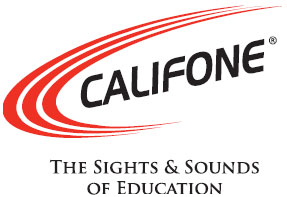Califone’s Roscoe Anthony Believes Educators Can Teach Integrators a Thing or Two
Quick Bio
NAME: Roscoe Anthony
TITLE: President
COMPANY: Califone
FORECAST: Anthony predicts strong growth in technology adoption across all education segments when we emerge from the economic recession.
SCN: Your education was in business, and now you are in the business of education. You got to know this market first with JBL Professional, Tascam, and then Califone where you began serving as VP of marketing in 2001, and later became president. What standard business principles do not apply in the education vertical?
Roscoe Anthony: Actually the business of education is very much a business like any other. Educators are looking for the same things other buyers desire: performance, quality, and value. If your brand promise is fulfilled in the classroom, you’ll have a convert for life. Teachers like to share successful approaches and technologies with other teachers. Working in the education space is rewarding, and the excitement for my team is that the universal promise of education is deliverable with the technologies of today. Up-to-the-minute content, access to a rich treasure of information, interacting with content in ways that were unheard of just a few short years ago—all are made possible with the integration of AV/IT.
SCN: What do AV integrators and consultants most need to learn about the mindset of educators working in the classroom?
RA: First, educators in the classroom need systems that are very easy to learn and operate. In the K-12 space, teachers often have students manage and interact with the equipment, and because of this interface they need systems that students comprehend and can operate. Luckily students are fearless digital natives, and interfacing with technology is natural for them. Teachers have had an unfair reputation as being slow on the uptake of technology, but over the last 10 years I’ve found that not to be true at all. From laptops to iPods, I’ve seen teachers quickly adopt new technologies and begin using them in the classroom. Teachers see their students using new technologies and understand that they will engage students much faster if they use the new technologies themselves.

Califone had a congratulatory party when Roscoe Anthony’s presidential announcement was made.
Second, educators need products to perform as advertised. Educators have always had limited budgets, and the current recession has only made those budgets even more limited. If they can purchase something, they need it to perform to spec and continue to perform.
SCN: What do you think is key to a technology being seen as a “must have” versus a frivolous expenditure?
RA: The “must have” technologies are those that help the educator do their job more effectively. Anything that can bring the course curriculum to life, engage students, and save time is seen as a “must have.” As greater amounts of course work and content is ported to the internet, it creates new paradigms to reach and teach, and thus any technology that provides a platform to record, retain, display, and broadcast becomes a necessity, not a nicety.
SCN: How would you complete the following statements?
The K-12 market is changing most in the area of... broadband access to information and course work and all the attendant platforms from mobile phones to computers. The need to accommodate streaming video and other rich content that is driving educators today. The technology that is being adopted in the consumer market is rapidly finding its way into the classroom, and educators are quickly creating supplemental course work to take advantage of the students’ attention and interest. And with the huge growth in distance learning and other modalities, our industry is needed to deliver content in a vibrant way. The infrastructure necessary to tie all this content together is where integrators come in.
The higher education market is changing most in the area of... AV/IT integration. Students have traditionally sat in classrooms for lectures and tests, but they now have more opportunities for interaction with the content, other students, and lecturers in other geographies and remotely if necessary. Universities and colleges have been at the forefront of adopting interactive white boards, cameras, and recording devices all to ensure that course work is meaningful. The flexibility of the AV/ IT infrastructure is desirable because it must accommodate so many different teaching styles in a single multi-use room.










